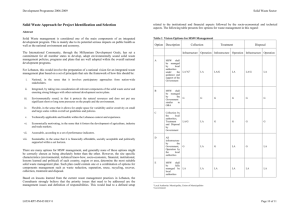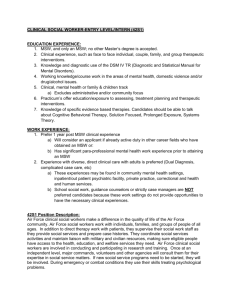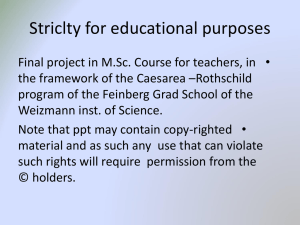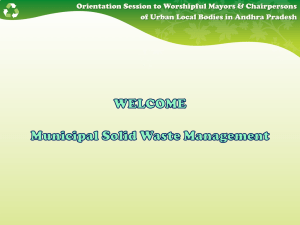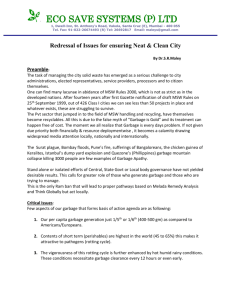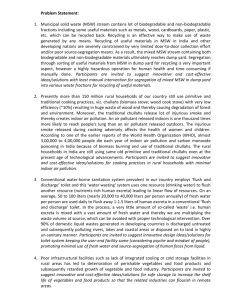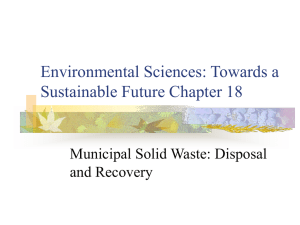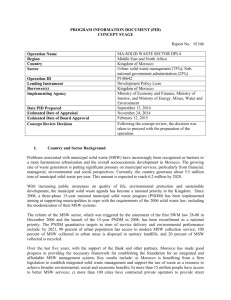Issue 15 Mountains of Trash: are they Sustainable?
advertisement
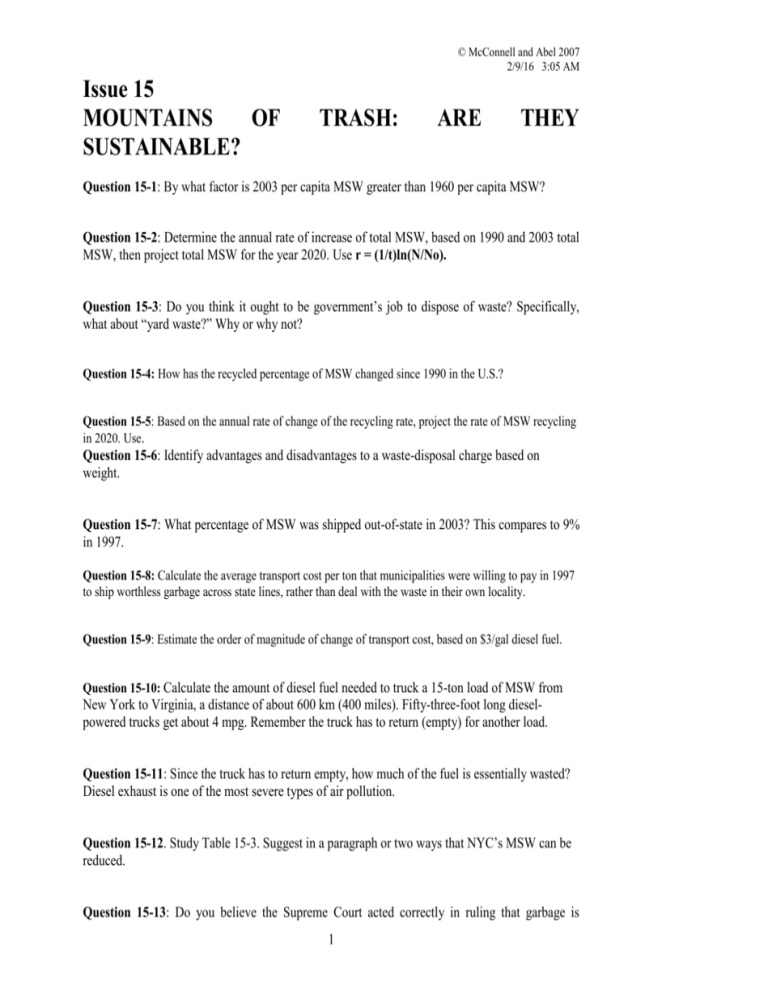
© McConnell and Abel 2007 2/9/16 3:05 AM Issue 15 MOUNTAINS OF SUSTAINABLE? TRASH: ARE THEY Question 15-1: By what factor is 2003 per capita MSW greater than 1960 per capita MSW? Question 15-2: Determine the annual rate of increase of total MSW, based on 1990 and 2003 total MSW, then project total MSW for the year 2020. Use r = (1/t)ln(N/No). Question 15-3: Do you think it ought to be government’s job to dispose of waste? Specifically, what about “yard waste?” Why or why not? Question 15-4: How has the recycled percentage of MSW changed since 1990 in the U.S.? Question 15-5: Based on the annual rate of change of the recycling rate, project the rate of MSW recycling in 2020. Use. Question 15-6: Identify advantages and disadvantages to a waste-disposal charge based on weight. Question 15-7: What percentage of MSW was shipped out-of-state in 2003? This compares to 9% in 1997. Question 15-8: Calculate the average transport cost per ton that municipalities were willing to pay in 1997 to ship worthless garbage across state lines, rather than deal with the waste in their own locality. Question 15-9: Estimate the order of magnitude of change of transport cost, based on $3/gal diesel fuel. Question 15-10: Calculate the amount of diesel fuel needed to truck a 15-ton load of MSW from New York to Virginia, a distance of about 600 km (400 miles). Fifty-three-foot long dieselpowered trucks get about 4 mpg. Remember the truck has to return (empty) for another load. Question 15-11: Since the truck has to return empty, how much of the fuel is essentially wasted? Diesel exhaust is one of the most severe types of air pollution. Question 15-12. Study Table 15-3. Suggest in a paragraph or two ways that NYC’s MSW can be reduced. Question 15-13: Do you believe the Supreme Court acted correctly in ruling that garbage is 1 © McConnell and Abel 2007 2/9/16 3:05 AM “commerce” even though it is valueless? Explain. Question 15-14: To what extent are victims of trash-truck crashes part of the real cost of waste disposal (i.e., that part of the cost not reflected in the price paid to landfill operators, etc.)? In your answer discuss whether you think this is a “fair” question and state your reasons. Question 15-15: When assessing the economics of waste reduction strategies, should monetary losses, deaths, and injuries avoided by reducing waste be considered? How? Explain your decision Question 15-16: Canada’s computer industry believes consumers should pay to get rid of their ewaste. The industry wants to add a $25 fee to the cost of computers to cover recycling. Do you support such a plan? Why or why not? Question 15-17: It has been said that in Europe, “anything with a plug is recycled.” Would you support this practice being required by law in the U.S. and Canada? Why or why not? Question 15-18: Summarize the main points of this Issue. Question 15-19: Discuss MSW and e-waste from the perspective of sustainability. FOR FURTHER THOUGHT Question 15-20: Much of the non-point source pollution in Oregon’s Willamette River in 2000 was from the high-tech industry. How are policymakers and stakeholders addressing this problem? Question 15-21: Access the Ohio EPA report we referenced above. How can waste disposal fees account for only 15% of the real cost of waste? Question 15-22: Ontario, Canada ships much of its MSW to Michigan for disposal. What are the advantages and disadvantages to Michigan of this activity? Is this a “national security” issue? Why or why not? Question 15-23: Go to the web site of Zero Waste America (www.zerowasteamerica.org) and analyze “Three Steps to Zero Waste in the U.S.” 1. What are the three steps? Which is least controversial in your view? Why? 2. Assess the likelihood of each of the steps being implemented. You could use a key such as, “most likely”, “very likely” “possible, but unlikely” or “unlikely.” Justify your conclusions. Question 15-23: As of 2000, 23 states had total or partial bans on yard waste in MSW. Some were considering repeal of the bans. Research the status of yard waste bans today. Do you support yard waste bans? Explain, using critical thinking principles. 2 © McConnell and Abel 2007 2/9/16 3:05 AM Question 15-24: How does your city, county or school “handle” yard waste? Question 15-25: Waste News1 reports that the U.S. steel-recycling rate hit an all-time high of 75.7 percent in 2005, recycling 76 million tons of steel. Steel-can recycling reached 63 percent in 2005, representing nearly 1.4 million tons. In 2004, 61.7 percent of cans were recycled. What factors discourage can recycling? “Can” it eventually approach 100%? Question 15-26: The National Solid Wastes Management Association (NSWMA) in 2006 released a report, “Rising Diesel and Commodity Prices Mean Higher Garbage and Recycling Costs”2. The paper predicts continued high fuel prices, in part because “EPA regulations requiring cleaner diesel fuel for trucks and buses are expected to increase the price of diesel starting in mid2006.” Do you think that eliminating 8,300 premature deaths and tens of thousands of cases of respiratory ailments from particulates in diesel exhaust (EPA estimates) is worth a higher cost for waste disposal? How might businesses or communities faced with such costs address them? (Think about the yard waste bans, for one thing.) Question 15-27: A report by the Environmental Research and Education Foundation3 entitled “Carbon Sequestration in Municipal Solid Waste Landfills” summarizes research demonstrating that wood and paper products buried in landfills isolate the greenhouse gases (GHGs) CO2 and CH4 (methane) for the long-term. Discuss the advantages and disadvantages of landfilling as a means of avoiding GHG emissions. 1 www.wastenews.com www.wasteage.com 3 www.erefdn.org 2 3
